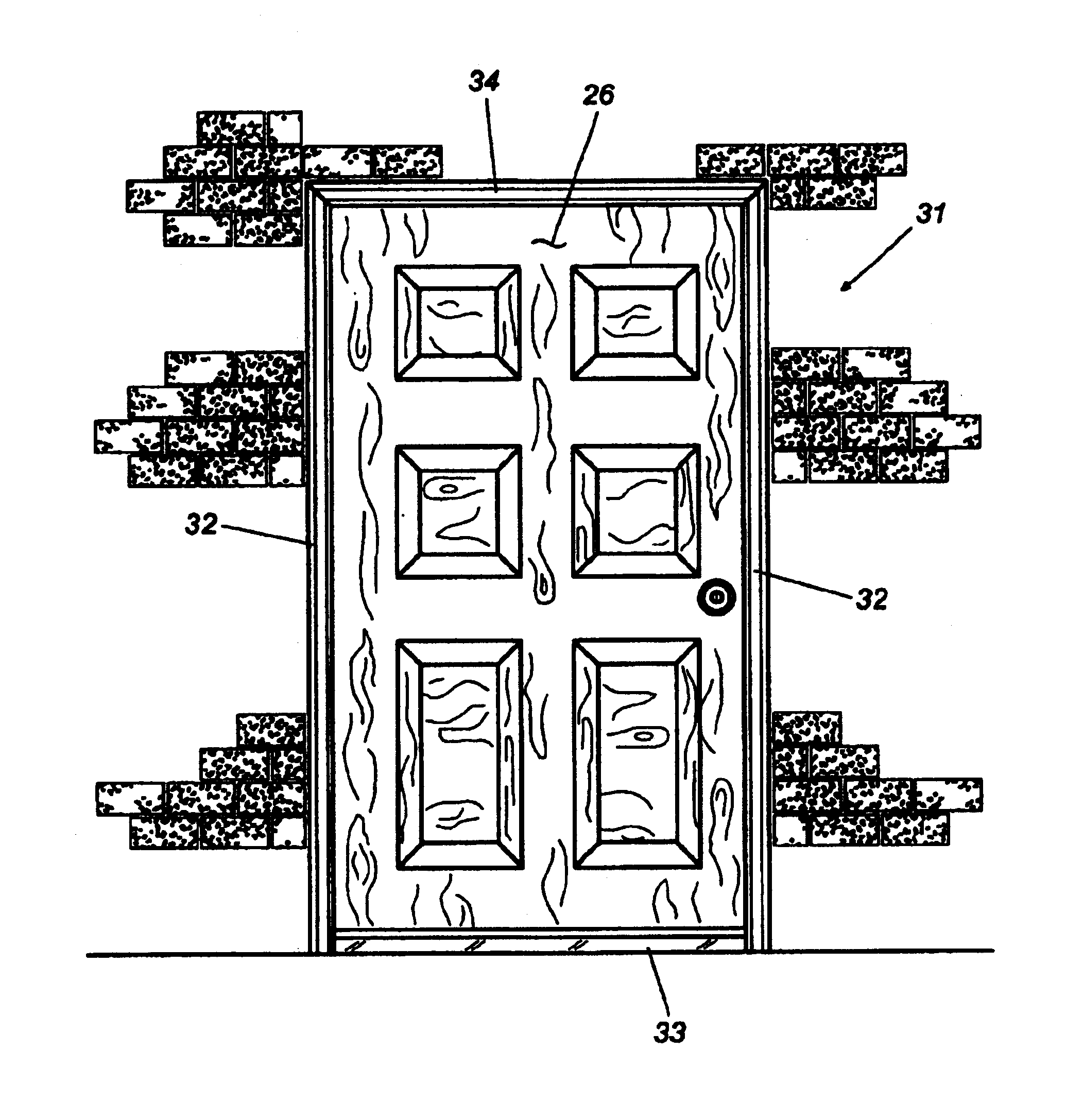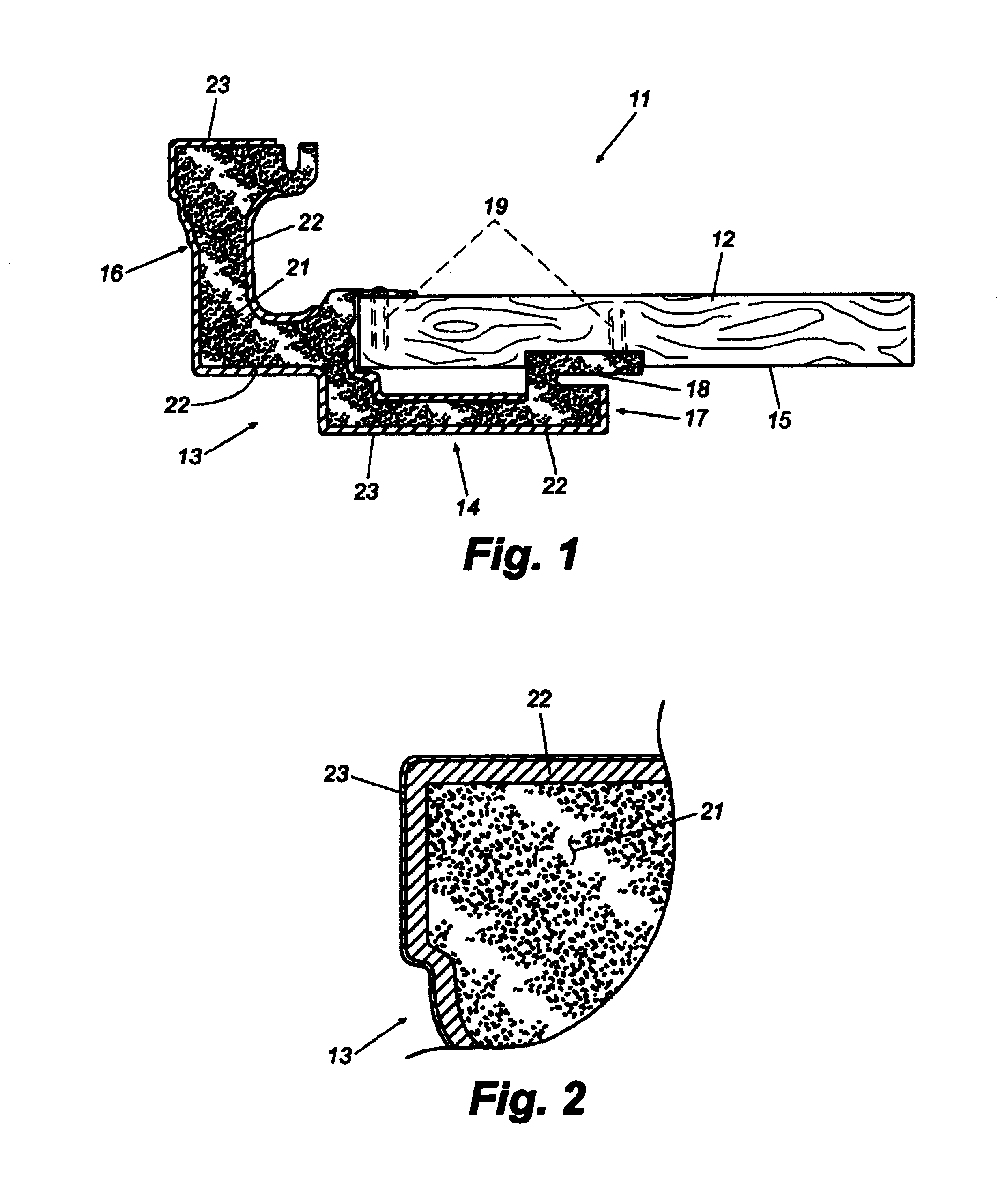Entryway with dimensionally stable plastic components
a technology of dimensional stability and entryway, applied in the direction of synthetic resin layered products, branching pipes, joists, etc., can solve the problems of insufficient thermal expansion and contraction of wood, less than optimal for entryway fabrication, and increased cost of wood as a fabrication material, so as to reduce the cost, reduce the coefficient of thermal expansion, and high hdt
- Summary
- Abstract
- Description
- Claims
- Application Information
AI Technical Summary
Benefits of technology
Problems solved by technology
Method used
Image
Examples
example
[0021]The present invention has been tested in a variety of ways as described below to verify that the extruded plastic components of the entryway indeed exhibit dimensional stability when exposed to extremes of temperature while simultaneously being sufficiently economical to compete in the marketplace. First, specimens of the invention with various thickness and compositions of stabilizing layers and with various or no wear layers were subjected to heating and cooling cycles in an oven and a freezer. Prior art all-PVC components were also subjected to the tests as control samples. In the test, samples were heated in the oven to a temperature of about 178°-180° Fahrenheit (above the HDT of PVC) for a period of about 2 hours. The specimen was then taken out of the oven and allowed to normalize to room temperature for about 2 hours, whereupon the specimen was placed in a freezer and left overnight at temperatures below 32° Fahrenheit. The cycle was repeated five to six times and the ...
PUM
| Property | Measurement | Unit |
|---|---|---|
| thickness | aaaaa | aaaaa |
| thickness | aaaaa | aaaaa |
| thickness | aaaaa | aaaaa |
Abstract
Description
Claims
Application Information
 Login to View More
Login to View More - R&D
- Intellectual Property
- Life Sciences
- Materials
- Tech Scout
- Unparalleled Data Quality
- Higher Quality Content
- 60% Fewer Hallucinations
Browse by: Latest US Patents, China's latest patents, Technical Efficacy Thesaurus, Application Domain, Technology Topic, Popular Technical Reports.
© 2025 PatSnap. All rights reserved.Legal|Privacy policy|Modern Slavery Act Transparency Statement|Sitemap|About US| Contact US: help@patsnap.com



